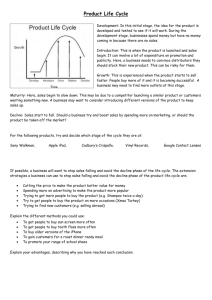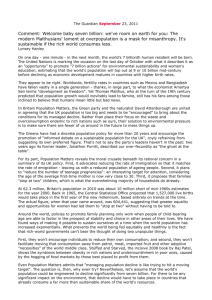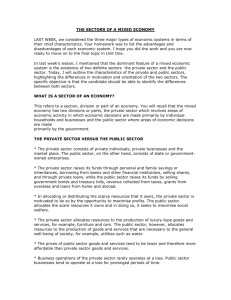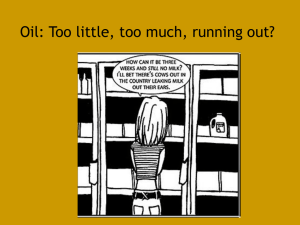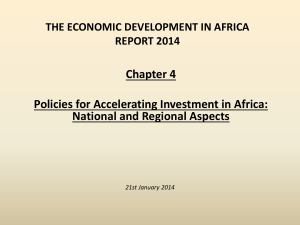Deindustrialisation 1870-2007
advertisement
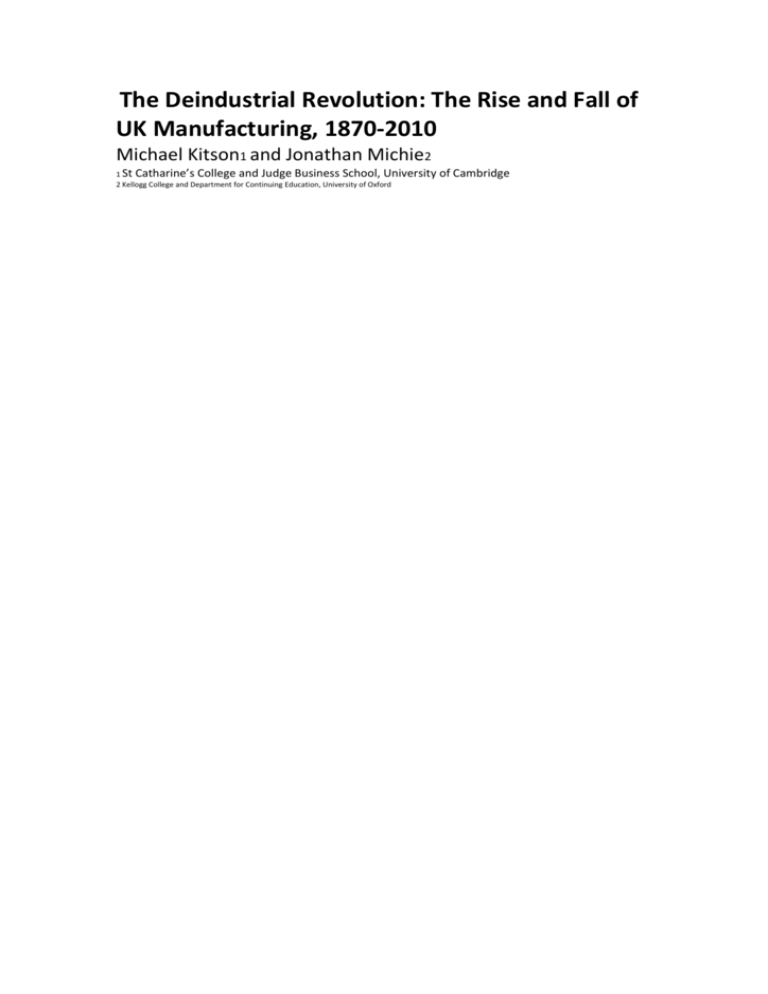
The Deindustrial Revolution: The Rise and Fall of UK Manufacturing, 1870-2010 Michael Kitson1 and Jonathan Michie2 1 St Catharine’s College and Judge Business School, University 2 Kellogg College and Department for Continuing Education, University of Oxford of Cambridge 1. Introduction This chapter considers the evolution of the manufacturing sector in the UK since 1870. It analyses the contribution of manufacturing to national income, employment and trade. Broadly, for almost a century, from 1870 to 1960, manufacturing played a key role in the development of the economy, undergirding success in other sectors of the economy and securing rising living standards. The subsequent fifty years, from 1960, have witnessed a relative decline of the UK manufacturing sector – relative to other sectors of the economy, and relative to the manufacturing sectors in other countries. The chapter considers the thesis that the relative decline of manufacturing is a natural outcome of the development of advanced economies, as against the counter-arguments suggesting that decline of UK manufacturing represented something more than this, reflecting economic weaknesses and structural imbalances. We argue that in the case of the UK, the relative decline of manufacturing has indeed reflected deep-rooted structural problems. In particular there has been a chronic failure to invest in manufacturing, with the UK economy and investment being instead skewed towards short-term returns and the interests of the ‘City’. These structural problems have led to uneven growth in the UK. Regional problems emerged in the interwar period due to the relative decline of traditional industries located in the North and the growth of new industries located in the South and the Midlands. After the Second World War such disparities persisted but were ameliorated by active industrial and regional policies. Since the early 1980s, regional growth has diverged – with London and the South East expanding faster than the rest of the UK. The benign neglect of manufacturing by policymakers has led to an unbalanced economy with manufacturing balance of payments deficits emerging and then persisting since the early 1980s. Following the 2007-8 credit crunch and the global recession of 2009, a political consensus emerged around the need to rebalance the economy, with a stronger manufacturing sector. Britain does still have pockets of competitive manufacturing – in such sectors as aerospace and pharmaceuticals. But this consensus around the need for rebalancing was not translated into any significant growth of investment, output or employment in manufacturing, nor did it result in the emergence of new sectors of manufacturing strength. A substantial devaluation assisted manufacturing exports, but even with rock-bottom interest rates, repeated quantitative easing, and agreement with the banks on providing increased credit to business, the results over the four years from the 2009 recession proved meagre.

